Recently, a lot of technologies that are about to enter our lives in just five or ten years have emerged. All this will have quite a large impact on our cities, houses, apartments, attitude to things and, overall, on our values. By the way, some of the elements of the future are relatively familiar to us, but let’s start the analysis of the future of the city and its components in the right order: in this case from the idea of how we expect the city of the future to be like.
Search engines give us three images of the city of the future, the first of which is some kind of skyscrapers conglomeration of bizarre shapes. And not just skyscrapers, but towers of some incredible size and height, which are aimed towards space, just like rockets. To be honest, this type does not hold any water and it is very hard to believe that our cities will look like this, but let’s return to this later. Examples of the “skyscraper city”:



The second type, which Internet suggests — a garden city. A city, which is surrounded by greenery, the height of buildings is not as large as in the skyscraper city and the cities themselves look quite cute and cozy. In principle, the second type of the city of the future looks the most realistic, but still misses some points.

An interesting project “Paris 2050” by Vincent Callebaut as an example of a garden city
The last city type is a dystopia city which is not even a city but a conglomeration of slums, poverty and devastation. A relatively trivial vision of the future not backed up by anything, but somehow this view is popular.

A dystopia city
What can be said about these three types of cities? They are all based on the idea that the population of people will group (which is true) and, as a result, all the cities of the future should have skyscrapers and must grow upwards, with what I strongly disagree due to a very important reason: the current population density.
Take the figures from Wikipedia: the population density of the Netherlands is higher than that of India — 407 people on a square kilometer against 397 people per km2. That is, in the Netherlands, the population of which is equal to seventeen million, should be as crowded as in the 1.3 billion India. Belgium, by the way, is not much different with their 368 people per km2 and with a total population of just over eleven million. Is it crowded in these countries? Do they look, even remotely, like these expectations of the future cities? Photos of the largest cities in the Netherlands and Belgium:

Amsterdam, the capital and the largest city of the Netherlands, population 825 thousand

Rotterdam, 625 thousand
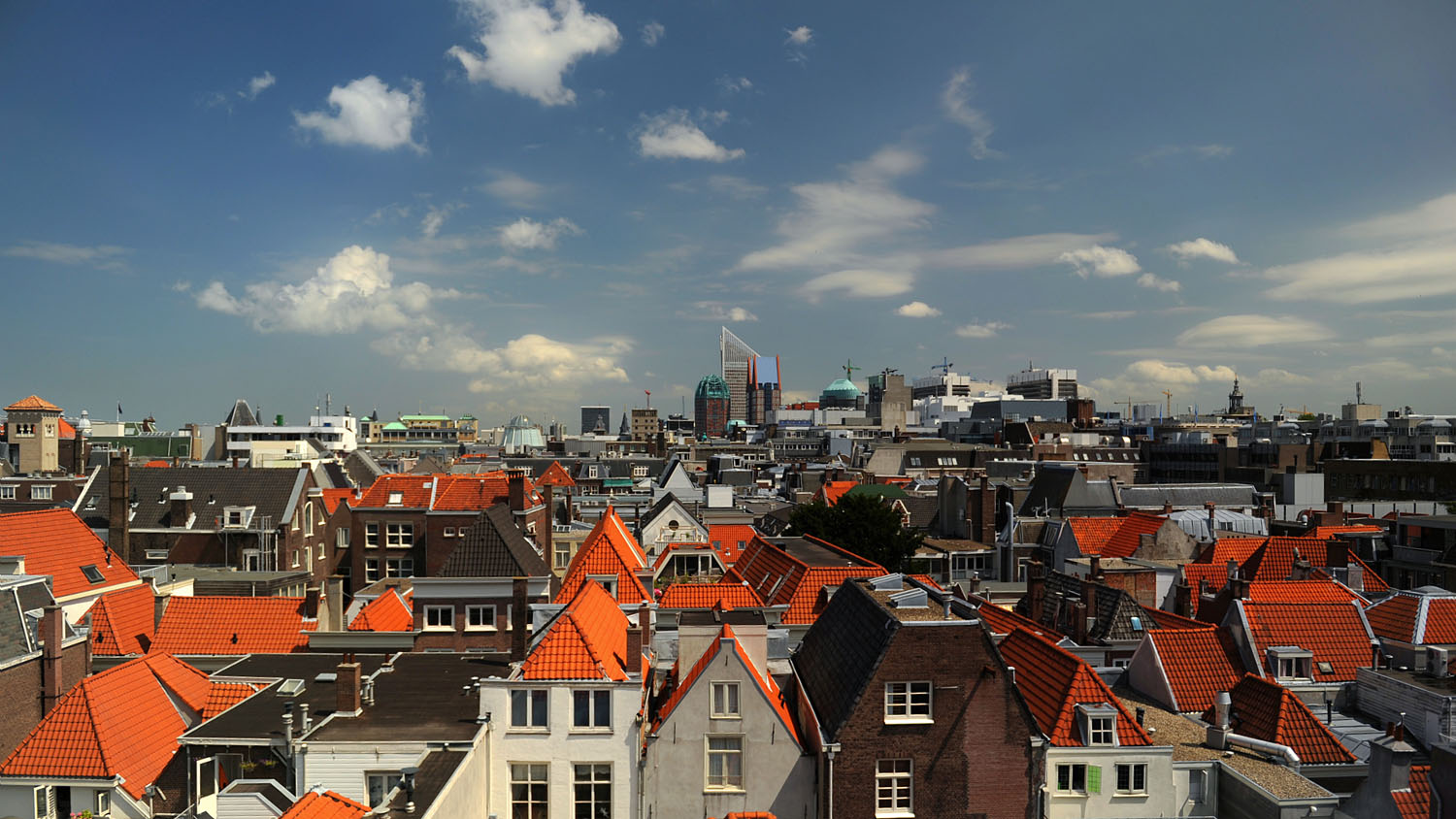
The Hague, 515 thousand

Antwerp, the largest city in Belgium, 510 thousand

Gent, 251 thousand

Charleroi, 202 thousand
As can be seen from the panoramas of the largest cities of some of the most densely populated countries in Europe (again: the Netherlands has a higher density than India!) — it had no effect on the height of the cities.
Yes, Rotterdam is relatively high, but this has developed historically: after the bombing during the Second World War the city was rebuilt and it turned into a kind of an architectural experiment. The tallest building in Benelux is located in Rotterdam — the “Maas Tower”. It can be seen on the panorama — a gray-black building to the right of the Erasmus bridge, office of Deloitte and AKD. So, the tallest Benelux building has a height of 165 meters, which cannot be compared to the height of the skyscraper cities.
One more analogy can be drawn. In this case let’s compare with Moscow, the capital of Russia. There are about 12.3 million people in Moscow — a city with the population of the whole Belgium. It is reasonable to build such territory up on the skyscraper city type, what, actually, was and is done:
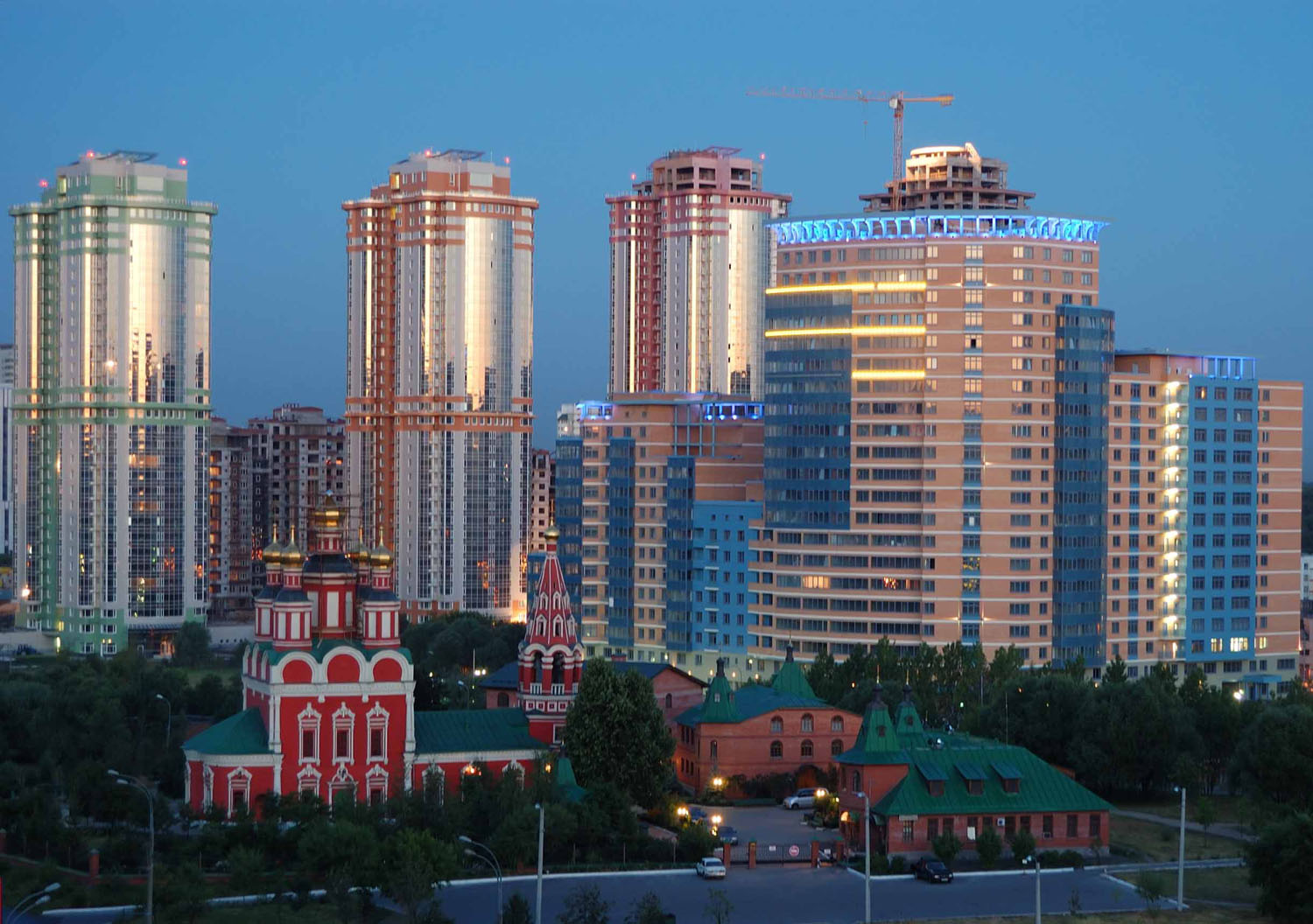
New buildings in Moscow
Moscow landscape:
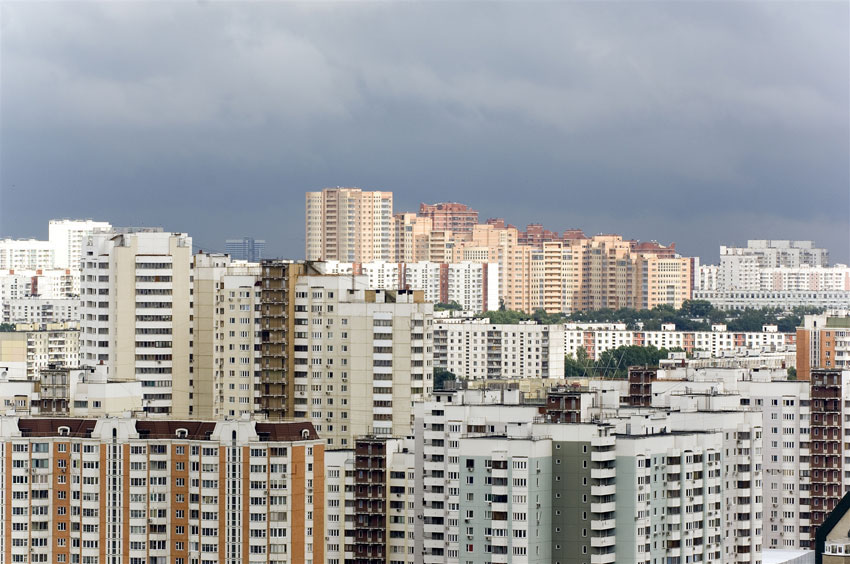


However, before claiming that Moscow’s strategy is correct and there is no alternative, it is necessary to take into account a few more numbers. Russia is the largest country on Earth with 17.1 million square kilometers. Its population is equal to 144 million people. Let’s compare with the European Union: area equals 4.3 million km2 (almost four times less), population — 508 million people! Three and a half times more people live in the EU on the territory which is almost four times less than Russia! Wherein European cities in most cases look like cozy towns with comfortable buildings proportions for human beings.
The thing is that Russian cities are an example of a mediocre urban policy which not only was not radically changed after the fall of the Soviet Union but was only exacerbated by continuing to build the same buildings but in larger size, height and on larger scale. And, as a result, a terrible centralization was created, which practically cannot be found in Europe.
Largest cities in Europe in terms of population: Istanbul (14 million), Moscow (12.2 m), London (8.4 m), St. Petersburg (5.2 m) and Berlin (3.6 m). London, a global city and one of the financial centers of the world, is an exception, rather than a regular European city, but even such city is smaller than Moscow and Istanbul! The next European city is Berlin whose size cannot even be compared with Moscow.
What follows from all this and how it is connected with the cities of the future? For a start, it should be recognized that enormous and gigantic cities are not a necessity but the contrary — the cause of an inefficient urban development. People relocate to the administrative centers not due to the desire to live specifically in the capital, but because of the lack of self-realization opportunities in other regions and in their hometowns. The greater is decentralization, the smaller the cities are, there are more of them and, of course, they are lower in height. Even taking into account the high population density across one country, they are more comfortable than half-empty countries like Russia with overcrowded major cities.
Another reason for skyscraper cities is poor transport or the lack of it. A person will not live in the suburbs or in a neighbor town if he has no possibility to quickly get to his office, university or school using public transport or if the quality of such transport is low. In that case that person will settle in the city, what takes place in Moscow and, as I might suggest, happens in Turkey. Otherwise why would 18 % of the country live in the largest city (the population of Turkey is 77.7 m, Istanbul, as has been said, 14 million).
The third important reason for the emergence of skyscraper cities is the avarice of the politicians. It is easier to build a large city, erect spectacular towers and show this city to all foreigners, take photos of the city center or a city district and tell the whole country the achievements of the government while showing the photos of the capital. This desire to “stand out” is strongly evident when you look at the list of the tallest buildings in Europe. In addition to Russia in the top ten there is London on the fourth place and Frankfurt on the ninth. The rest of the places, as one might guess, are all in Moscow.
From this simple list one can find a couple of interesting observations. The most obvious: Moscow and Istanbul are leading in the number of high-rise buildings in Europe. Such European cities as London, Paris and Frankfurt, which are tourist or business centers, have much less high-rises. Azerbaijan looks funny with five buildings only in Baku with heights between 140 and 209 meters. Azerbaijan, which has a 9.6 m population, an area of 86.6 thousand km2 and which cannot be compared to the economic development of Belgium, which has 30.5 thousand km2 size and which has three high-rises in Brussels from 142 to 150 m. The Netherlands are half of Azerbaijan size and have almost twice as many people and still the high-rise buildings in the country are between 140 and 165 m. What is more, high-rise buildings are located in four cities of the country, rather than in the capital alone, as in Azerbaijan.
Another interesting observation is the Palace of Culture and Science in Warsaw, construction of which ended in 1955 by the Soviet Union. To this day, it is the tallest building in Poland: the height of the Palace is 237 meters; the height of the Warsaw Trade Tower build in ’99 is 208 m, and the recent Złota 44, built in 2012 — just 192 meters. What follows from this? There is no need and economic rationality in the construction of such tall buildings, which are just toys for people who imagined themselves as “emperors” and “masters of the world”.
The Palace of Culture and Science is an excellent example of the imperial heritage. And the current urban policies of Moscow and Istanbul are also excellent examples of vain ambitions and ostentatious success, aimed only at the officials with their reports to their superiors, which will replicate these beautiful pictures around the world, proving that they are “part of Europe” too.
By the way, of the economic irrationality of such projects like “Moscow City” says the large amount of unoccupied spaces: according to various estimates between 30–40 % of the whole project is not rented and in some buildings the number increases to 70 %. And that is not taking into account the fact that the complex is not finished! The completion is scheduled for 2019. In view of international sanctions the full name of this project sounds especially funny: “Moscow International Business Center”. Real Moscow and “Moscow City”:
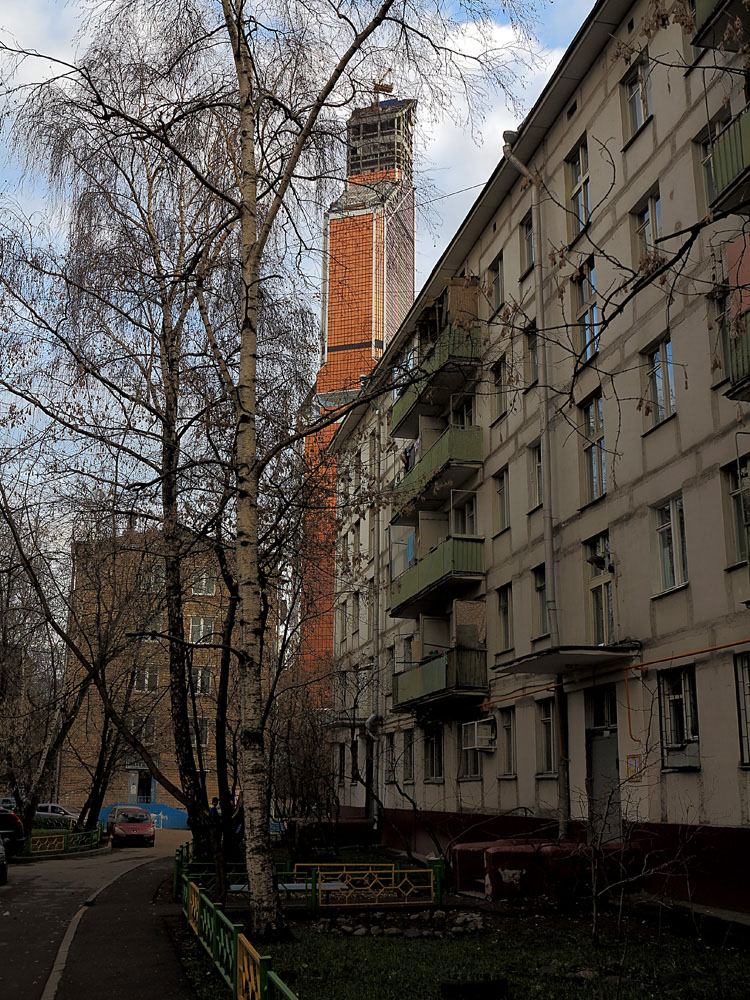
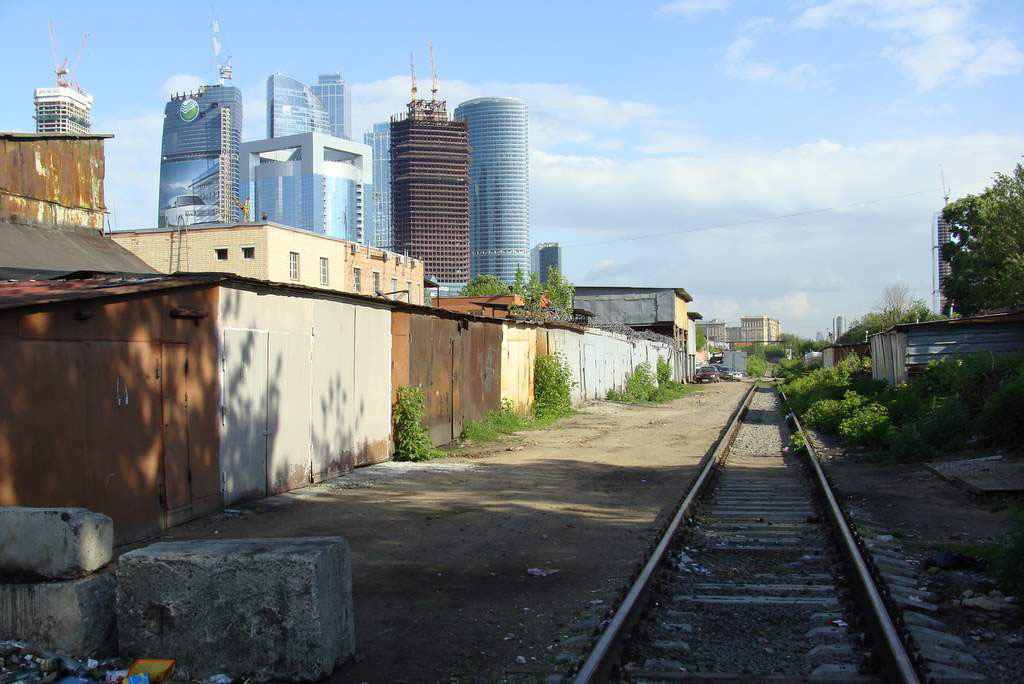
This is the first part about the cities of the future; let’s draw some conclusions: the size of the country and its population does not affect the height of cities and their sizes. The Netherlands and Belgium could be the examples as the most densely populated countries in the world. What really affects cities is the unreasonable centralization, economical depression of the majority of the regions of one country, lack of high-quality public transport and vain ambitions of politicians.
Moscow fell victim to all these factors. It is likely that the same situation is in Istanbul and other cities outside Europe as the facts and figures give this particular picture.
How will the cities of the future really be like? With the right urban planning decisions they will be greener, will remain as cozy as Europe is now and will develop harmoniously until a certain moment. Then, perhaps, they will start getting smaller: distant jobs and latest types of transport will allow us to relocate from cities to wherever we wish. Perhaps, the future is not in the city but in private homes. We will analyze this in subsequent parts. The main thing to remember — the skyscraper city is not a necessity but an obvious incompetence of the city planners, politicians and their hollow ambitions.



























Comments